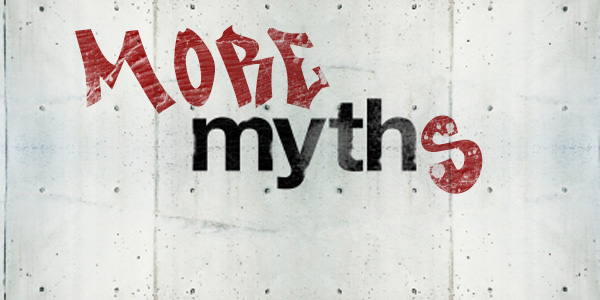Editor’s Note: We continue our look back at articles from our first year by exposing five more commonly-held eSourcing myths (or what are also commonly-used excuses to bypass eSourcing).
- eSourcing is not needed because the incumbent supplier has already agreed to the targeted reduction. In general, “pre-emptive” bids by incumbents are designed to keep the business and avoid negotiations that approach ‘market’ pricing. But, if the incumbent bid is low enough to satisfy management and bypass an eSourcing event, enter the final (unambiguous) requirements into the eSourcing tool and have the incumbent submit its (unambiguous) bid. This introduces eSourcing to the incumbent for future/other categories and can speed up the contracting process.
- eSourcing technology does not support what we want/need to do. eSourcing applications are the most powerful of all supply management technologies. They are robust (complex at times) and have an ability to model most offline sourcing practices. (Sidebar: progressive CPOs work aggressively to simplify all of their processes). If the current sourcing process does not map to an eSourcing solution, call your provider’s product support team and its consultants or product specialists that spend time in the field to validate that fact and ask for proposed workaround. A probable answer may be found in tweaking the solution or in tweaking the process.
- eSourcing is not needed because it just replicates the one of top skills of the procurement department/staff: negotiation. eSourcing can help discover price in a very fair, fast, and effective way but it can also provide value in many other areas. It is a communication platform that fosters collaboration. It is a knowledge repository that captures key category, supplier, process, and bid information. It is a process enabler. The efficiencies that eSourcing can bring to the process can allow for more time to be invested by a project team in the definition of requirements, identification of suppliers, and other areas. It can also enable the team to tackle more overall projects. In extreme cases, certain “old school” negotiators could be given a “free pass” and only use the tool to input final contract information (after the offline negotiation has been completed). I don’t support this “workaround” for use in many cases; but, in the bigger picture, it ensures that the eSourcing tool is utilized and that the department has some level of visibility into the negotiations.
- eSourcing applications are too complex. The power and robust capabilities of an eSourcing tool can make it difficult for the occasional user to master all of the tool’s facets (It is incumbent upon solution providers to make their eSourcing products easier to use). By mandating usage (via an eSourcing 2.0 doctrine), users will now have a vested interest in learning how to use the tool well. eSourcing templates (and access to them) can be structured to simplify the eRFx creation process; centralized support teams/specialists/power users can help too. Remember when Lotus123 and Lotus Notes were impractical and too complex? Imagine life without Excel and email. My point is: things change, technologies improve; you don’t want to become this guy.
- eSourcing will fail because suppliers will refuse to participate – Some suppliers may refuse to participate as a matter of policy or because they have been ‘burned’ in the past. An eSourcing program that communicates information clearly and fairly, that follows the sourcing and award process that it lays out, and is responsive to feedback throughout and after the process will win the attention and engagement of the vast majority of its suppliers. Suppliers can reduce their costs in an efficient process and can gain critical market information. An example of the value of bid information to participating suppliers: In the early days of eSourcing/eAuctions, I once manned the bidder’s helm with Aman Bawa, Mark Kiefer, and Ben Pearce as we represented Commerce One’s Auction Services team during America West’s online auction for an eAuctions license. We lost. The winning bidder won with a bid of $0 for the license which was clearly not a good sign for providers in the space. Our team took immediate notice and realized that we needed to broaden our solution footprint and expand our services to compete in areas beyond price. We had already started some of this work, but losing that bid to a competitor willing to give away the base product told us we needed to move and move fast. As it turned out, the winning bidder (Material Net) and many other companies in the space were gone within a year. Commerce One lasted a few years longer, but only a few – the reasons behind its demise were more complex, but beside the point. I hope think you get my point.
I always want your feedback and comments and this article is no different. Do these myths have traction within your enterprise? Do other myths exist? What type of pushback do you get? What are the things holding back your eSourcing program? Maybe you disagree with the concept of eSourcing 2.0 or maybe you are only interested in “busting” more technology myths……
What do you think?



An interesting article that hits some important points. eSourcing and it’s development like any other technology requires the early adopters to blaze the trail. Then, I think we’ll find that its use will become much more widespread quite quickly once the benefits have been demonstrated and proven by some procurement leaders.